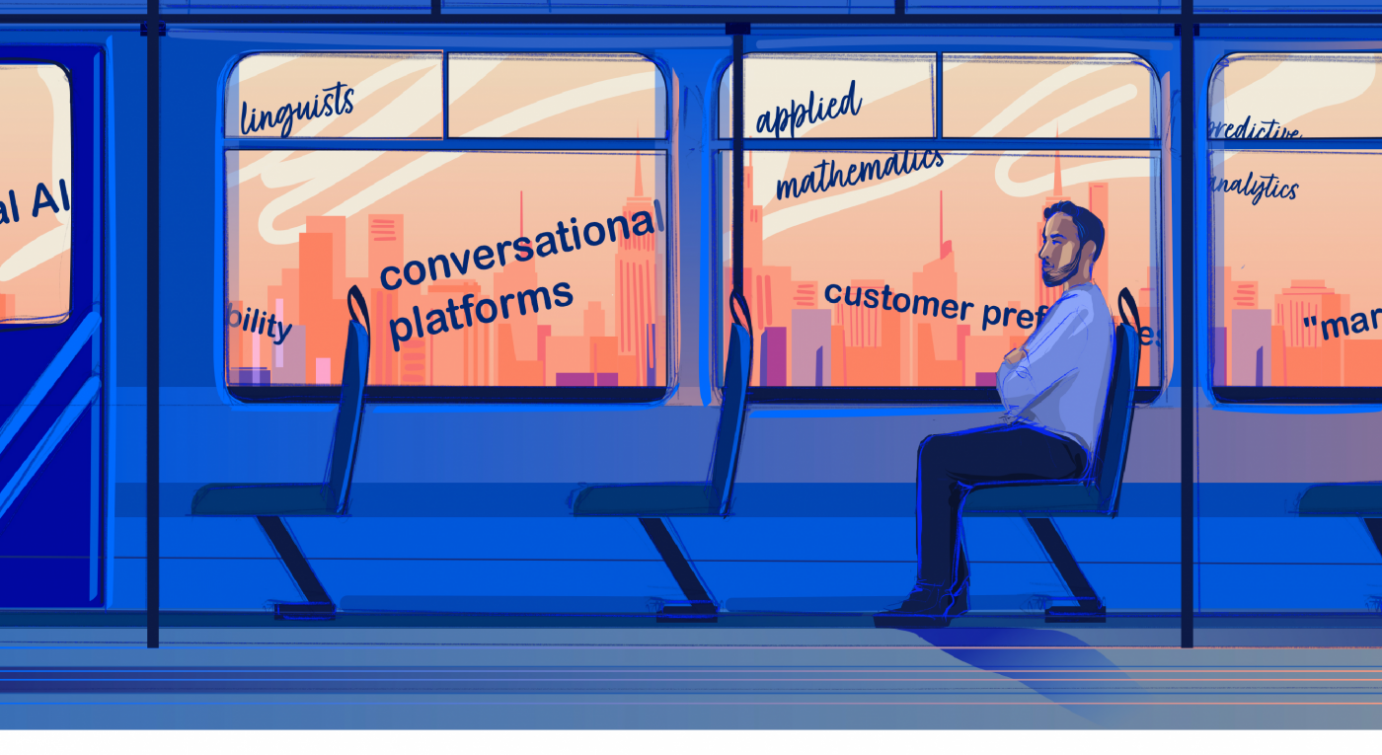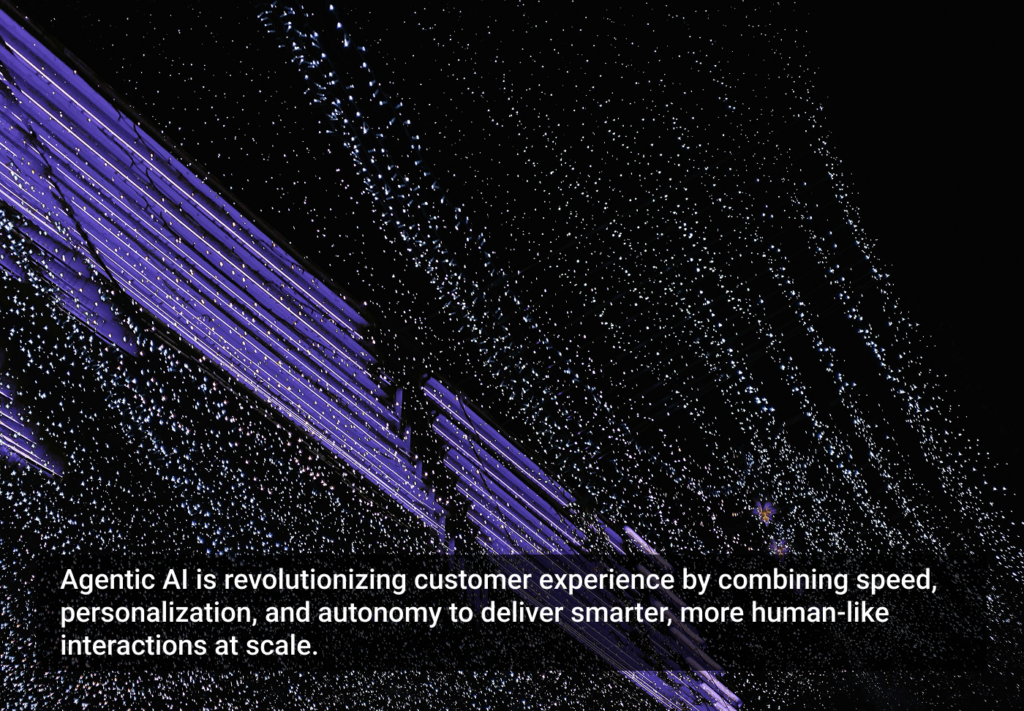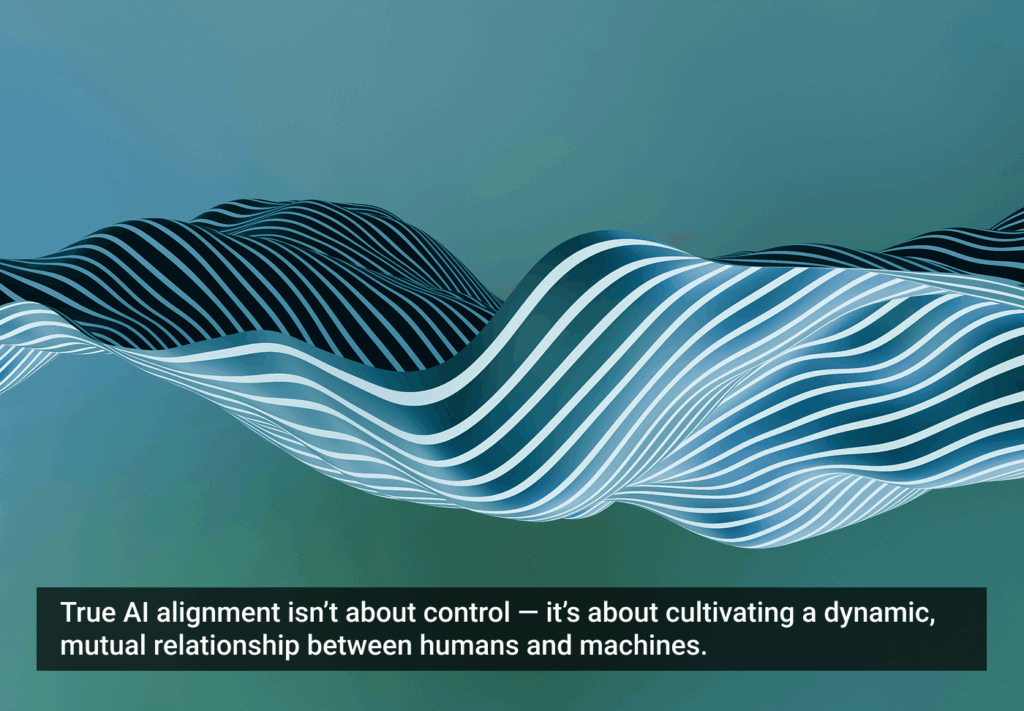In 2016, before I became involved with conversational AI, I was working in the Public Sector division of a Big 4 Consulting Firm. The pace and formality of federal work wasn’t my cup of tea, and it felt like I was losing more skills with each day that passed. I was on the verge of moving on from the firm altogether when I received a call from one of our organization’s senior leaders in NYC. I had spent the previous three months traveling on a 4am bus from Washington DC to NYC every Friday, hoping to find opportunities to fully utilize my background in formal logic, applied mathematics, linguistics, and, oddly enough, customer service. The role he offered me involved applying AI automation to IT services, and that’s where I met my first conversational AI platform, Cyril.
Actually, I’m calling it Cyril for privacy reasons, but this was my first encounter with a generalized AI conversational platform—one designed to build conversational business solutions. At first, working on Cyril was a side project. My team was supposed to be focused on using predictive analytics to automate IT tickets, but we were drawn to a vision of conversational enterprise applications. With the advent of Siri and Alexa, it was so obvious to us that, eventually, all applications were going to be conversational.
Why were we so sure? Because conversation is the only interface everyone already knows how to use. If we could remove the barriers between people and machines using a mode of interaction endemic to everyone on the planet, well, we got pretty excited thinking of all the ways our daily lives would change.
We began showing off some of Cyril’s capabilities in the form of an HR onboarding exercise to people inside and outside of my consulting firm. From the C-Suite down, everyone loved the idea of conversational solutions, but we continued to get the same reaction, “this is interesting, but we’re just not ready for it”.
Conversational AI is Hard
Let me get this out of the way: building useful Conversational AI solutions is HARD. Not kinda difficult. Really, genuinely, truly hard.
To bring this technology to life, we needed to work with teams across organizations in ways that hadn’t been done before. We needed linguists, designers, engineers, architects, telephony experts, solution specialists, contact center agents, business owners, and data scientists all working together to build solutions without a clear market example to point to and emulate.
Many clients try to build conversational solutions themselves with a few engineers and an open framework (lex, Dialogflow, LUIS, Watson, etc). What they almost undoubtedly end up with are time consuming, and expensive lessons in humility. Without a linguist to help out they don’t sound right. Without a designer, they don’t flow right. Without a business owner, they solved the wrong problem. I’ve built hundreds of failed conversational bots, and it’s a thorny pathway that inevitably leads you to the realization that conversational applications can’t just be plugged in and set loose. They actually have to be useful and built for the long game.
Unlike traditional automation, or the ever-dangling RPA (robotic process automation) carrots, conversational solutions are not successful just because they technically “work.” Remember, you are introducing another element as your automation partner—humans. Even if the solution behaves exactly as expected, it is worthless if it solves the wrong problem or solves the right problem in the wrong way.
Once you manage to build a successful conversational solution and it solves a real problem in the right way, your work still isn’t done. These aren’t stand-alone applications. They need to be continuously fed, like a plant, so they can grow. Customer and employee needs change, and so too must your conversational solutions. Conversation AI—and I’ll add here that this term is becoming obsolete—represents an ongoing journey of continuous iteration and improvement.
The goal is to create evolving experiences that resonate with users. These experiences will be multi-modal (voice & visual), data driven, adapt to user preferences, and focus on what really matters, user outcomes.
With this in mind, I refer to this new domain as Experiential AI (XAI). Conversational AI is a conduit to a greater strategy aimed at achieving long term delightful user experiences. XAI is the clear evolution from conversational capabilities (something I’llI\ explore in an upcoming article).
Analyze This
So, after taking hundreds of hits, my team and I figured out that we needed to grow and feed our conversational applications. To know what to feed them, analytics would be crucial, but the tools we needed didn’t exist. Each conversational platform has its own way of collecting data, making it hard to create reusable analytics engines. Besides, most of the market was still focused on just getting these solutions up and running. The thought of capturing and using data to inform future iterations was way too far down the list of priorities.
Eventually, we were able to build custom analytics engines that work across tech stacks, but, along with being incredibly difficult to create, we often didn’t know exactly what we were looking for! When asking our clients for their customer service data we often came up empty. We started with the basics, Mean Time to Resolution (MTTR), Containment Rates, CSAT scores, and eventually found our way into an entirely different business model: outcome driven metrics.
Once we got a few of these solutions going, the piles of useful data started to snowball. Clients who had previously told us they wanted to improve customer self-service finally knew what their customers were asking for. Marketing teams who wanted to test out effectiveness of new upsell techniques could do so in real time. Realtime, AI driven A/B testing, led to almost unthinkable understanding of individual customer preferences.
To curb no-shows, hospital networks can now act upon the understanding that patient Joey Smith likes to be contacted in the mornings, via SMS, with a friendly disposition, and a lengthy confirmation of his upcoming appointment that includes the office address. This is a whole new world of customer engagement.
Armed with the knowledge of each individual customer’s preferences, a completely new business model began to form. Almost entirely by accident, I found myself in the heart of big data and predictive analytics, exactly where I started. Utilizing this data to iterate on conversational solutions and inform business practices across an entire organization was a compelling reason to undertake this long conversational journey all by itself. This was the dawn of something big.
A Shift in the Conversation
You may be saying to yourself right now, “Got it. You made useful solutions and, informed by data, figured out how to rapidly iterate on them. How can I do that?”
The answer isn’t simple. It requires some initial growing pains, a growth mindset, and a steady resolve toward a long-term roadmap. To put this in perspective, I founded a Global Conversational AI cohort with over 500 people across 36 countries in order to get my firm over the initial hump. Still, there was something critical missing: the right tools.
It was my job to know every conversational vendor and every platform the market could offer. Another nugget of honesty: when we finally figured out what we needed to build, we had no way of translating the experience into something truly useful for customers. We were constrained into thinking about what our tech suite could support and what it couldn’t. Our ultra-personalized, omni channel, data-driven conversational interface plans were morphed into, lets say, less ambitious plans.
Remember Cyril? Cyril was (and still is) a “market leading” conversational AI platform, but has no voice capabilities (STT & TTS), no native email connectors, no SMS tools, limited reporting capabilities, and relies on a unique coding language created specifically for its use. Cyril is entirely closed off to customizable features, leaving us to beg and plead with the vendor for new capabilities that would (hopefully) appear on the platform in their next release, which always seemed to be three months away. So, what did Cyril have? Some basic Natural Language Processing (NLP) capabilities. Ironically, NLP amounts to roughly 10% of conversational solutions, if I’m being generous. Plus, once you implemented Cyril, you were stuck with Cyril. It would have been a multi-million dollar effort to replace the systems with the latest and greatest when something new came to the market.
Don’t get me wrong I am incredibly grateful for what Cyril taught me about the space, but we began to resent our teacher for its limited capabilities to deliver on the grand visions we had for our clients. What was worse, even after having established partnerships with all of the market leaders, we couldn’t find anything meaningfully better. We were left to create mostly individual FAQ chatbots that ended up being less useful than the FAQ pages on our customer’s sites.
I met with over 100 vendors in my five years leading the conversational practice, trying to find a set of tools to free us from these creativity handcuffs. WARNING: The overwhelming majority of conversational vendors claim to be omni-channel, AI driven, and seamlessly integrated. Sorry to spoil the suspense, but they most certainly are not.
Then, in 2018, I caught a break. That was the year Gartner started publishing a market guide for conversational platforms, and it included a new player, OneReach.ai.
After speaking with the company’s founder, Robb Wilson, my thinking about conversational applications changed entirely. Everything I knew about how these applications were built, who needs to be building them, and, most importantly at the time, what was possible to build, was wrong. After a great deal of skepticism, testing, and more testing, for the first time, I had found a platform that could actually execute on what was promised.
Excuse me while I streak through the weeds here but I could buy a phone a number, choose between (or select all) 10 STT and TTS vendors they happened to have hooked up, send an SMS to collect an email address, confirm the email over the phone, send a custom email, and after clicking on a link embedded within the email, hear on the phone line “great I see you’ve clicked the link”—all in five minutes flat. It was like the first time I skied down a Colorado mountain—those New York hills just never felt the same.
Robb and his team talked about the transition away from something they call “random acts of technology” (like our FAQ chatbots) to an ecosystem where sequencing smaller pieces of interconnected automation brings about a state of what’s called hyper-automation. The vision of a conversational enterprise was finally real.
Hyperautomation is the Next Big Thing
Wrapping my head around the vision of hyperautomation, I came to realize that conversational AI will not connect everything. Instead, conversational AI will live inside of everything. It will be embedded in every solution, unlocking the technological barriers for useful interactions between man and machine.
This is why the term Conversational AI is basically obsolete. Once conversation becomes embedded in every aspect of every viable business, it won’t need a fancy name, it will be a given. If you want to read more about the mechanics of how this is happening, I strongly recommend reading Robb Wilson’s up-coming digital book on the subject, “Age of Invisible Machines.”
Suffice to say that once an organization creates an ecosystem of intelligent conversational digital workers—thus achieving hyperautomation—that organization’s paradigm for productivity changes in such a dramatic way that they put themselves far out of reach from their nearest competitors.
As I became more familiar with the OneReach.ai platform, I started to think of them as less of a conversational platform (though they certainly are) and more of a way to change how your company solves problems and makes lives easier. The OneReach.ai platform accelerates your adoption of hyperautomation by changing who can build software, how it’s built, what you can build, and your speed in doing all of the above. It really brings to life the growing prospects of XAI, and is an ideal platform for creating Experience-as-a-Service (XaaS).
This is an Asset, not a Threat
If your head is reeling a bit from the idea of conversational AI being embedded in everything, try and find comfort in the fact that once this starts happening, almost every aspect of business will transform for the better.
In a state of hyperautomation, conversational interfaces will free up everyone in your workforce to become a creative problem solver. Since a worker’s market value is driven by the ability to solve problems, your workers will thank you for their new superhuman abilities.
Instead of completing monotonous tasks, they will be able to compete on a whole new level—enabling your business to move at speeds that would otherwise be impossible.
It is important to note that just as humans will use bots to gain new superpowers, so too will bots use humans to enhance their own capabilities. These digital workers won’t be omniscient, fully autonomous problem solvers anytime soon. One key method to unlocking the promises of a hyperautomated organization is creating systems where digital and human workers can utilize the best of their own unique capabilities by working together.
Maybe you’ve built a digital worker that can automate the entire process of qualifying and signing up a new customer for a loan, but the organization is not ready to hand over the keys to the house so soon. So for now, the bot will do all the dirty work and proactively reach out to their human supervisor to receive final approvals. Soon, with hyperautomation in place, these approvals will also be handled by the bot, and the role of the human supervisor will shift from loan approvals to possibly handling more complicated follow up questions of customers to create a more personal relationship once a loan has been signed.
At the risk of sending you reeling again, it’s important to come to terms with the fact that hyperautomation isn’t some hypothetical, future-casting thing—it’s already hitting and disrupting industries. The banking industry, for example, is being upended by Ant Financial Services Group, a young, nimble, hyper-automated company from China that has already surpassed the number of customers served by the largest U.S. banks by 10 times. They’ve done this with a workforce that’s 1/10 the size of old guard financial giants.
Organizations that take a proactive, holistic approach to integrating hyper-automation into their operations are preparing themselves to thrive in a totally new era of business. Those who shrug it off as too expensive, too time consuming, or too trendy are putting themselves in immediate risk for being disrupted.
Augmenting Our True Nature
As a worker myself, I was wary of this massive shift in how work gets done. Like many others looking at this emergent technology, I could imagine a future where by helping to automate the tasks I performed on a daily basis, I would be training myself out of my own job. The reality has been entirely different. Hyperautomation has actually fostered a new dynamic that allows individuals the freedom to find more satisfaction in their work and lets organizations focus on building enhanced relationships with customers.
One of the projects I led at my firm involved deploying IVR bots for a bank that was looking to reduce call-time and eliminate the number of calls coming in. The bot was very useful. Everyone loved it and the bank enjoyed a massive containment rate.
The interesting thing that happened, however, was that the calls going to human agents were actually increasing in length. Our first instinct was to try and figure out what was going wrong, but it turned out something unexpected was going right.
With the bot taking care of rudimentary tasks like checking balances and making payments, the conversations between customers and agents were becoming more high-level. With more time on their hands, agents became more flexible and confident in leading customers through more sophisticated tasks, in effect deepening the customers’ relationship with the bank. In fact, we discovered that loyalty increased as a direct result of this unexpected shift in agent behavior.
Jobs are going to shift from being more task-driven to being more relationship-driven. Customer service is no longer going to be about manning the register and collecting a payment. It’s going to be about getting to know the people coming through the door and anticipating their preferences so you can offer them a truly tailored experience. Conversational AI and hyperautomation are going to dramatically shift the essence of what “work” means to human beings.
This is a Good Thing
Humans are meant to be creative problem solvers. We’re not particularly good at performing monotonous tasks all day long. That said, conversational AI is not just a tool to automate password resets, or augment your FAQ page. What conversational AI really represents is an opportunity to reinvent the identity and structure of an organization by focusing on the experience rather than the technology. Like traditional experience design, this requires a holistic approach, which means the process of getting there is more in-depth, but the payoff is exponential. By embracing this emerging reality with the right mindset, systems, and tooling, businesses can prepare to shift toward a new model.
With rapid iteration, data driven decision making, and universally accessible problem solving interfaces leading the way, it’s clear that the possibilities for what I used to think of as “conversational AI” are limitless.








